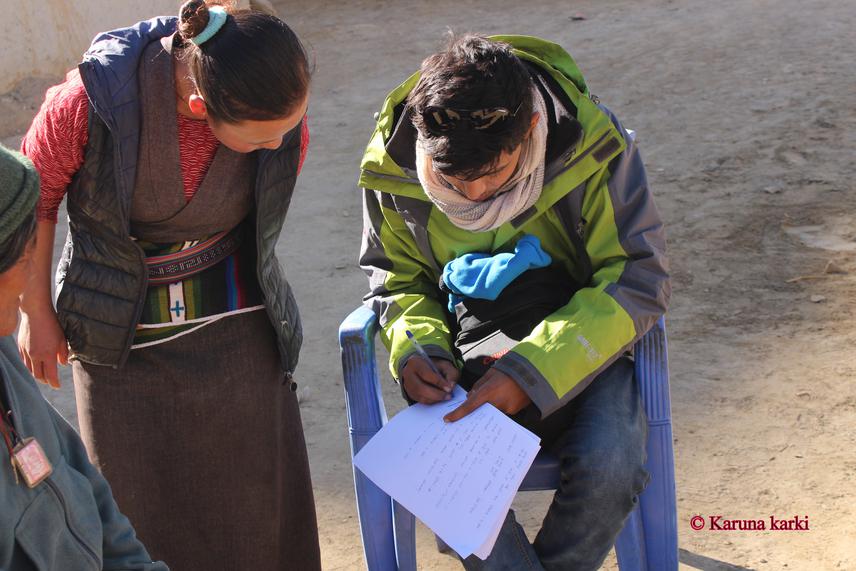Karuna Karki
Other projects
25 Aug 2016
Determinants of Spatial and Temporal Patterns of Human-Snow Leopard Conflict in Nepal I
The main goal of this project is help reduce the human-snow leopard conflict in Mustang region of Nepal by conducting i) research on state and causes of livestock depredation by snow leopard conflict, and ii) conservation awareness programs. Household and village level data on livestock loss to snow leopard will be collected in villages of Lower Mustang region, Annapurna Conservation Area, Nepal. The data will be used to infer spatial and temporal trends of livestock depredation by snow leopards, and develop livestock depredation risk maps. Such maps will be useful for help herder communities in adapting livestock grazing to reduce snow leopard attack on livestock. Conservation awareness program will be conducted for local pastoral communities, which we hope will contribute in reducing retaliatory killing of snow leopards and enhance community support for snow leopard conservation.

Depredation data collection.
Resolving human snow leopard conflict is important not only for its continued survival but also for ensuring sustainable livestock production by pastoral communities (McCarthy and Chapron 2003). In doing so, we require a better understanding of the extent, causes and correlates of actual livestock damage caused by snow leopard, and the threat of damage perceived by the affected people (Suryawanshi et al. 2013).
This project will complement findings and outputs of our previous project, which collected detailed data on livestock depredation by snow leopards in 30 village settlements of Upper Mustang over three years (2013-2016). In our previous study, we focused on assessment of livestock depredation by snow leopard in Upper Mustang region of the Annapurna Conservation Area. We documented household level loss of livestock to snow leopard in 351 households of 30 village settlements. However, it was realized that effective mitigation of human-snow leopard conflict in this conservation area would require data from the Lower Mustang region as well because previous studies have made little effort to document status of human snow leopard conflict in lower Mustang region. Our previous project couldn’t cover whole area of the Annapurna Landscape. This project will document household and village level livestock depredation by snow leopards in lower Mustang region. Together with the findings of previous project, the results of this project will provide comprehensive information on the state of human snow leopard conflict in the whole study area landscape.
With this follow-up project, we aim to collect data on spatial and temporal pattern of livestock loss to snow leopard, local herder communities’ attitudes towards snow leopards and inform conflict mitigation measures. Stakeholder workshop will be conducted to develop recommendations for mitigation measures-based on the findings of previous project. Herder workshop will also be conducted to sensitize herders about the Government’s wildlife damage compensation scheme, importance of snow leopard and its conservation. Outreach program in 30 villages of upper mustang will be conducted. Overall, the project is expected to generate field data to inform conflict mitigation measures and build social carrying capacity for snow leopard conservation.